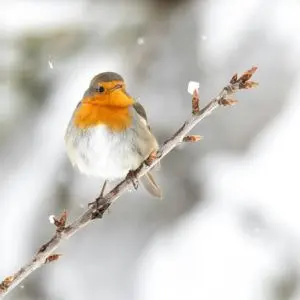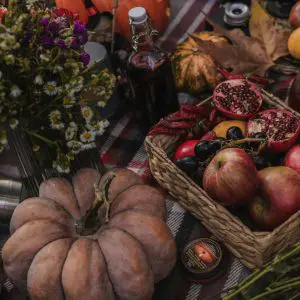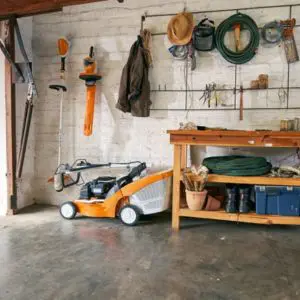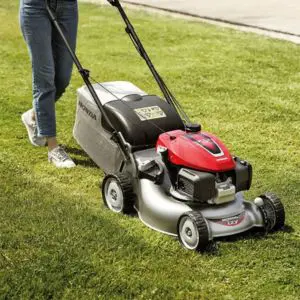
GMD’s Essential Month by Month Gardening Calendar for 2025
New year is the ideal time to start planning your month by month gardening calendar, where you decide which plants to grow, choose what garden machinery to buy, and determine how best to enjoy your garden over the coming year.
With this in mind, let’s take a look at a typical garden maintenance schedule month by month. Hopefully, this will give you a few additional ideas of jobs you can do around the garden, over the course of the coming year, and help you create the perfect garden maintenance programme for you…
 January
January
This month, it’s a case of out with the old and in with the new, but that doesn’t mean you need to completely discard the former. So, why not begin your 2025 garden maintenance schedule by shredding your Christmas tree for use as mulch on your garden borders? Not only is this the most sustainable way of disposing of your much-loved tree, it will improve your soil too. You’ll find a fantastic range of chippers and shredders, to help you get the job done with minimal fuss, here.
And as we’re still in the midst of winter, don’t forget to give nature a helping hand to see it through until spring. Be sure to put out a regular supply of food for the garden birds and, if temperatures approach zero, wrap your potted olive and fig trees in horticultural fleece.
In terms of plants, now is also the right time to force rhubarb. Simply layer the crowns with straw and cover them with an upturned bucket or pot to block out light. The forced stems will then be ready for you to enjoy by the start of spring.
February
With winter drawing to a close, February is a good month to focus your yearly garden maintenance schedule on checking that your garden machinery is in good working order, and to get it serviced in time for spring. Take some time to clean your planters and greenhouse as well, so they are spick, span and ready to welcome some new plants.
You can now start sowing vegetable seeds undercover. Begin with lettuce, spinach and other salad crops.
Also, add a further layer of mulch to your borders. This will help the soil retain moisture as the weather starts to get warmer and drier.
Plus, while it’s great preparing a garden for spring, it’s a good idea to keep an eye on the more distant future too. So, once your snowdrops have finished flowering, be sure to divide them so you can enjoy a more extensive display next year.
 March
March
By March, the longer days and milder weather will give you scope to really make the most of your annual garden maintenance schedule. Take this opportunity to plant summer flowering bulbs, such as gladioli, dahlias and lilies. You can plant potatoes, onion sets and shallots too, giving you the perfect mix of standout ornamental flowers and homegrown produce to enjoy.
March is also a good month to fertilise your lawn. This will give it a genuine head start as the growing season begins, and help limit the growth of weeds.
Also make time in your March weekly garden maintenance schedule to prune roses, dogwood and buddlejas. Cut back buddlejas hard, to a low framework of stems, in order to maximise those summer blooms.
 April
April
As the daffodils fade and bluebells flower, your garden will start to feel like it’s really coming to life. It should now be warm enough to sow hardy annuals, herbs and wild flower seeds directly into garden beds.
If you haven’t already, get the mower out and give your lawn its inaugural cut of the year. Ensure the grass is dry and begin on the machine’s highest setting. Regular mowing won’t just keep your lawn looking neat, it’ll ensure strong, healthy growth too.
Weeds will be out in force by now, so it’s important to put aside time in your garden maintenance calendar to keep them under control, especially those that might be a danger to smaller plants and seedlings. Aim to dig the weeds out by their roots to prevent them returning.
Will 2025 be the year you finally decide to buy a robotic mower? If so, be sure to take a look at Segway’s Navimow i Series. These robomows have been earning rave reviews for the simplicity of their setup, ease of operation, and quality of their cut. You can find them all amongst our full range of robotic mowers here.
 May
May
As they grow, potato plants need ‘earthing up’. This involves gathering mounds of soil around the stems of the plants (leaving around 5 cm of the plant visible) to protect the tubers from sunlight and promote strong growth along the stem. Do this in May to help maximise yields.
As May unfolds, you should also become mindful of your greenhouse overheating, so be sure to open the vents and doors on warmer days. Moving forwards, as the temperature gets hotter still, you should start using greenhouse shading.
Towards the end of the month, put summer bedding plants in borders, hanging baskets and other containers for an attractive seasonal display. Fuchsias, lobelias and petunias are some of our favourites.
 June
June
Summer’s finally here, and the extra light and warmth will result in a burst of growth around your garden. This means your garden maintenance calendar is sure to be packed with lots of exciting activities.
In June, you will need to prune some spring-flowering shrubs and evergreen hedges. We sell some superb secateurs and hedge trimmers to help you do just that.
Also, look to support taller perennials with stakes, so they don’t collapse under the weight of their flowers.
To maintain a pristine lawn, you should now be aiming to mow it once a week (if you’re struggling for time, remember the benefits of a robot mower). Weeds will be growing quickly too, so it’s vital you keep on top of them.
And as your garden is likely to require plenty of watering throughout ‘Flaming June’, be sure to do so wisely. If you don’t already own one, consider investing in a water butt.
 July
July
We’re now into the second half of our yearly garden maintenance schedule, and your garden is sure to be looking at its absolute finest.
So, deadhead flowering plants to help keep them structured and encourage fresh blooms. After their first flush, give your roses an all-purpose feed to promote good health and encourage the longest possible flowering season. After all, when a garden looks this good, you want to preserve it for as long as you can.
If there’s a danger of your water butt running dry, don’t be afraid to use domestic waste water from the kitchen or bathroom. This ‘grey’ water won’t damage your prized plants, as soil and potting composts are both effective at filtering out any nasties. Read our advice on the best times to water a lawn here.
And if you’re going on holiday, be sure to ask a friend or neighbour to water both the plants in your garden and those indoors. At this time of year, they shouldn’t be left unattended for more than a couple of days, particularly if the weather is hot and dry.
In June or July, pinch out the sideshoots on tomato plants. Feed and water them regularly too, then you’re sure to enjoy bumper crops in the months to come.
 August
August
In August, you’ll undoubtedly remain busy mowing, deadheading and weeding, particularly if there’s been a fair amount of rain.
This month is also the right time to give your wisteria its summer prune. After it has flowered, cut back the whippy shoots of this year’s growth to five or six leaves from the main stem, and trim the side shoots to between two and three leaves. This will encourage the flowers to grow while controlling the plant’s overall size, preventing it growing into (and potentially dislodging) guttering.
Also, why not try using grass cuttings as cover around your crops and hedges? They contain plenty of nutrients, keep moisture in the soil, and weeds at bay.
Finally, be sure to put aside time in your garden maintenance programme for August to collect any seeds for planting next year.
 September
September
September signals the start of harvest time, when gardeners reap the rewards of all their hard work. Sweetcorn should now be at its peak, and tomatoes can be picked as they ripen. Beetroot, carrots and salad leaves will all be available in abundance, while maincrop potatoes are also in season.
September is a good month to net your pond before the leaves start to fall. You should cover leafy vegetable crops with netting too, in order to protect them from birds.
Your month by month gardening calendar should also have a slot for sowing perennial and hardy annual seeds in September. This is a straightforward, cost-effective way to increase the number of plants in your garden next year.
 October
October
During October, it’s time to start thinking about closing down your garden, ready for winter. This makes it the ideal month to give your lawn its final mow of the year. Put your lawnmower on its lowest setting so the grass is cut nice and short, which will keep it healthy over the winter months.
This month’s mild temperatures and light rainy days also make it a suitable time in your garden maintenance schedule to lay new turf. To help prepare the ground ready for a fresh lawn, you’ll find our number one recommended turf cutter here.
Homegrown apples, pumpkins and squash should all be ready to harvest. We’re sure you’ll enjoy plenty now but be sure to store the rest for later use.
Also, by the end of this month, move your tender plants into the greenhouse for overwintering and divide herbaceous perennials to help them excel next year.
 November
November
When fallen leaves become wet, they look unsightly, present a slip hazard and damage your lawn, so it’s essential to clear them from your garden. Read Our Top Tips (and Best Tools) for Clearing Leaves from a Garden to ensure you carry out this task effectively.
Make November the month in your annual garden maintenance schedule to aerate or scarify your lawn too. Aerating a lawn will ensure the grass’ roots continue to receive optimum levels of oxygen, water and nutrients, while scarifying also removes harmful thatch.
And think ahead to next year, especially in terms of preparing your garden for spring. Plant tulips now to enjoy a splash of colour in March. Choose shorter varieties for containers and taller stems for borders.
 December
December
We’re now approaching the end of our 2025 Garden Maintenance Programme and, if you haven’t already, you should be moving your garden products into weatherproof storage. In the case of larger furniture items and ride-on mowers, fit them with protective covers.
Also, check your garden structures are in suitable shape to survive the winter months. The most vulnerable is probably your fence run, so repair or replace any damaged panels and posts, ensuring the latter are secured firmly in the ground. Conduct walkaround inspections of your garden buildings to ensure they are weathertight. Pay particular attention to the floors, roofs, plus joinery around the doors and windows.
Set aside time in your December garden maintenance schedule to insulate outdoor taps too. As frozen water can cause pipes to crack or burst, this small task could potentially save you a lot of money on plumbing bills.
Other useful jobs to round off your month by month gardening calendar include pruning deciduous trees and harvesting parsnips, sprouts and your remaining root crops, ready for Christmas dinner. It might be only a week or two since the last one but trust us – the next will be here before you know it!
 Find 2025’s Best Garden Tools and Machinery Here
Find 2025’s Best Garden Tools and Machinery Here
Whatever you have planned in your own month by month gardening calendar, you’ll find all the garden tools and machinery you need to realise your objectives here, at Garden Machinery Direct.
And as you go about your garden maintenance schedule month by month, if you find yourself in need of any advice relating to the garden machinery that we sell, please don’t hesitate to contact our friendly, UK-based Garden Machinery Experts, who will be delighted to assist you in any way they can.
Finally, we’d like to round this year’s Month by Month Gardening Calendar off by taking the opportunity to wish all of our customers, both old and new, a very happy and prosperous 2025, including a fabulous year in the garden!




